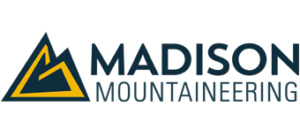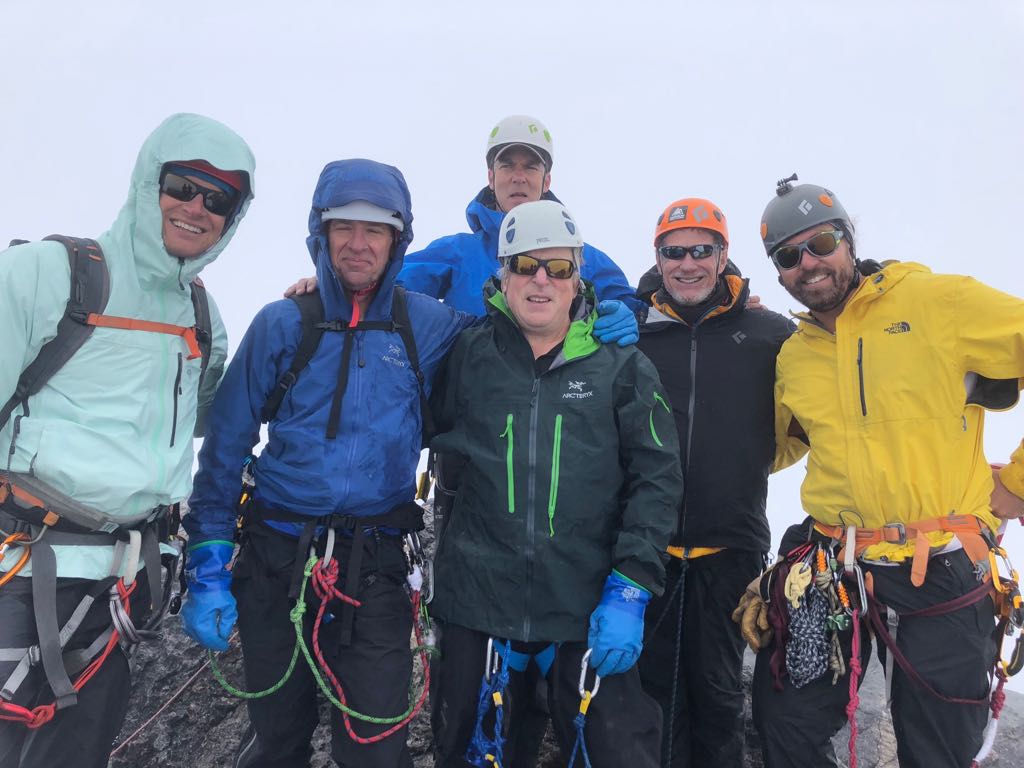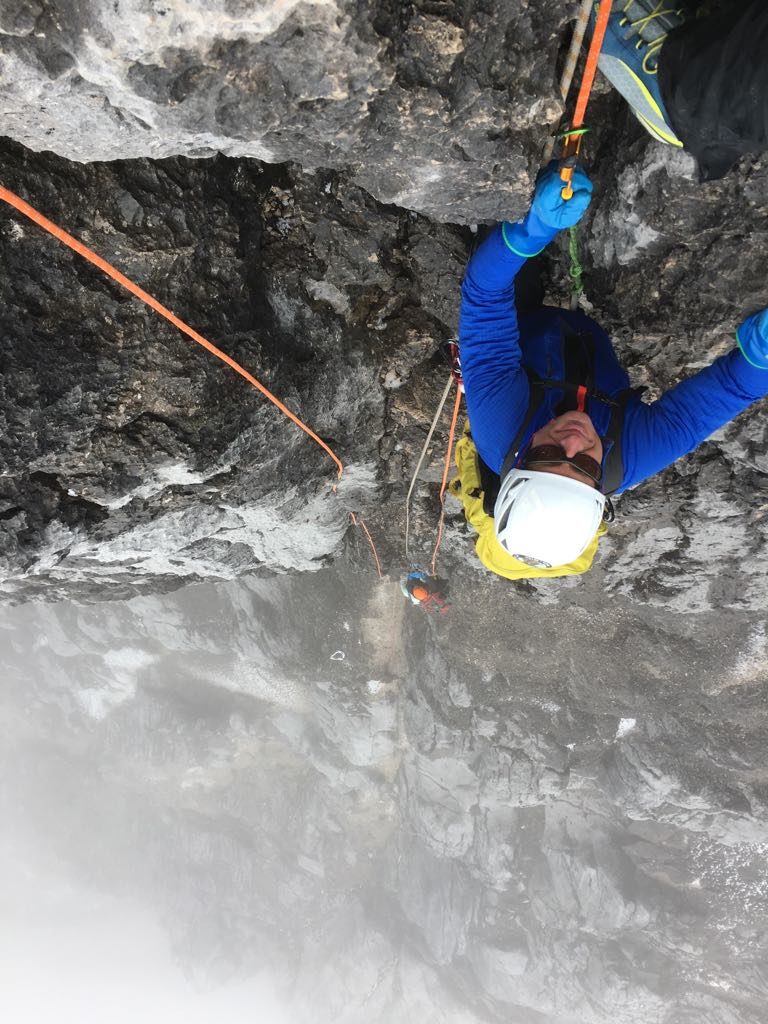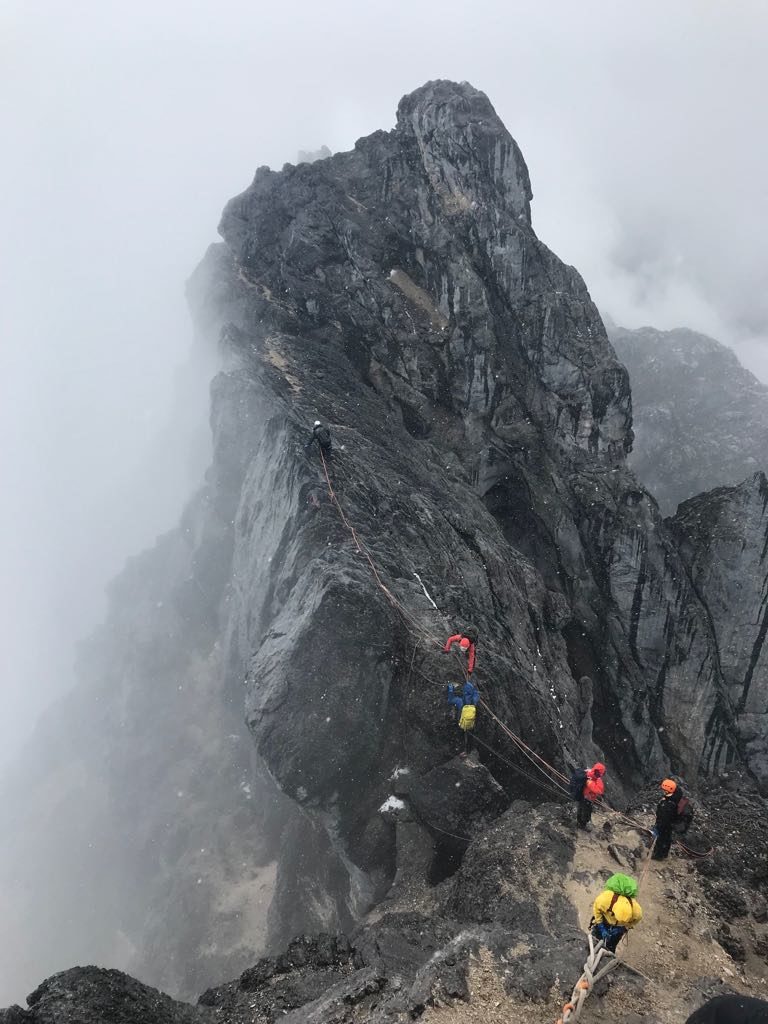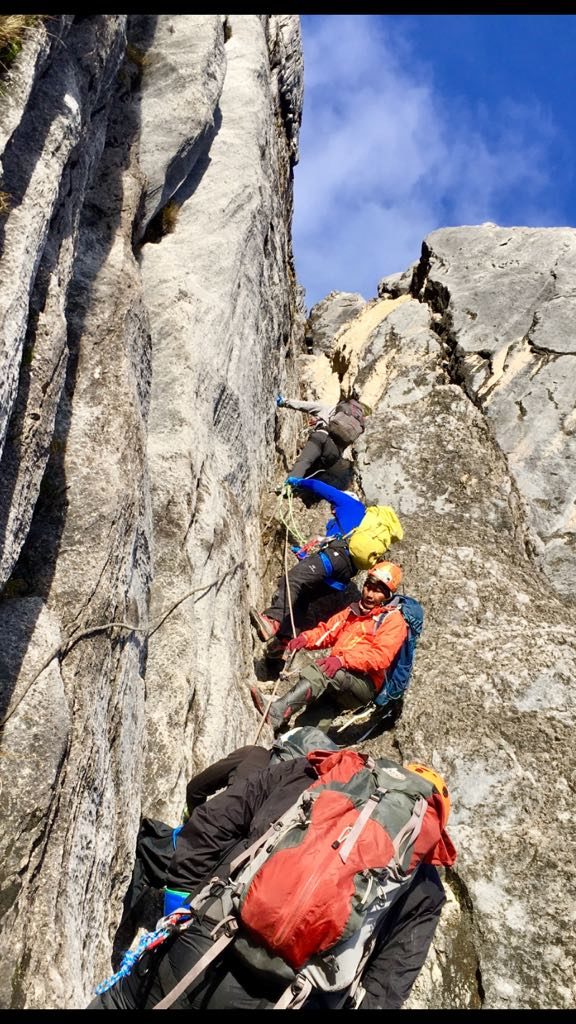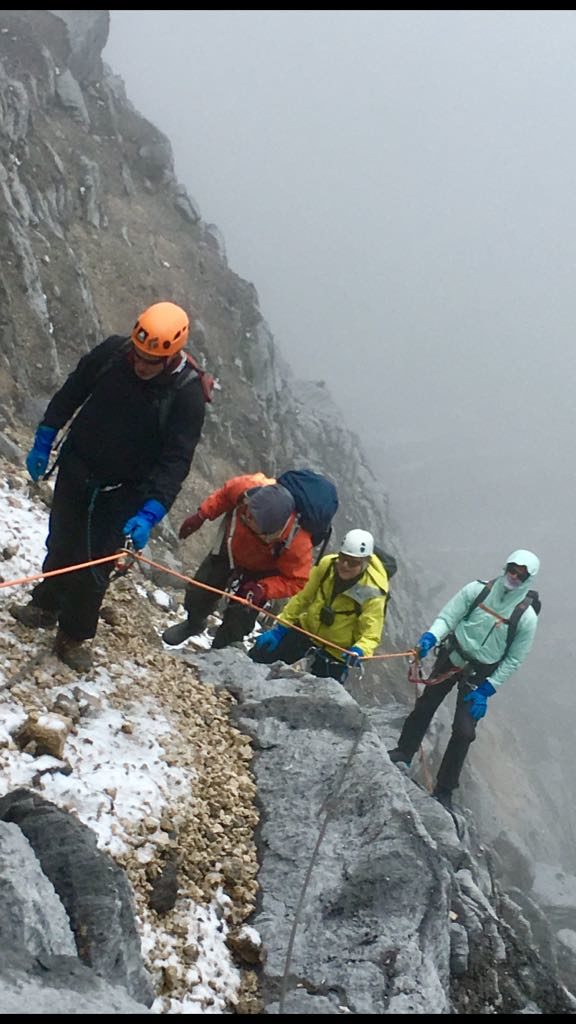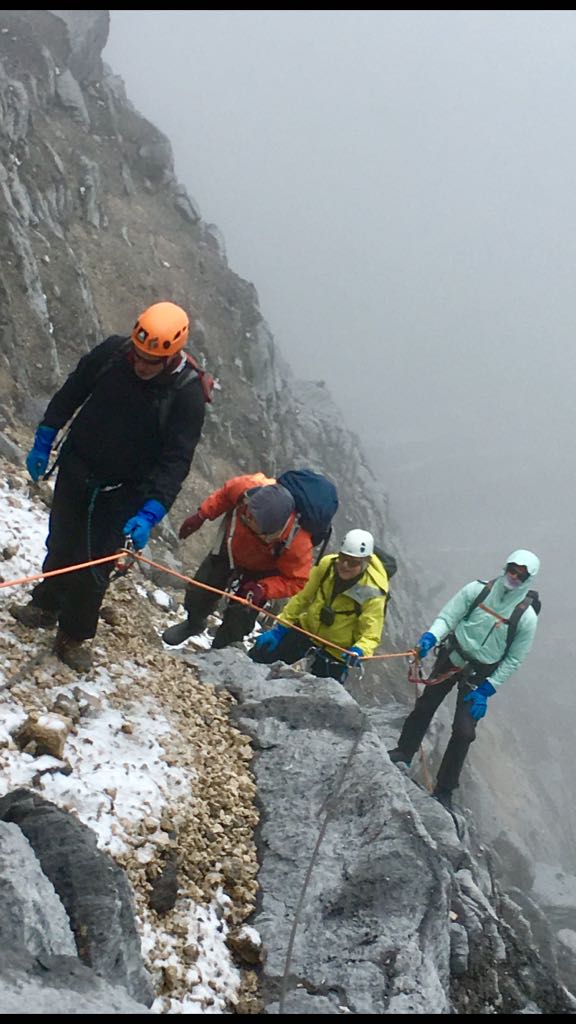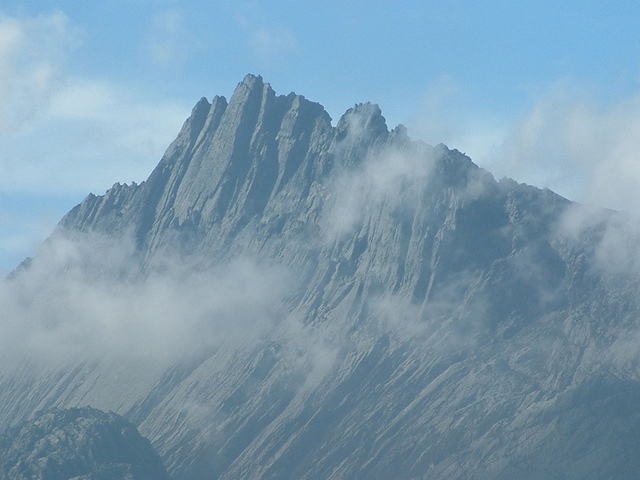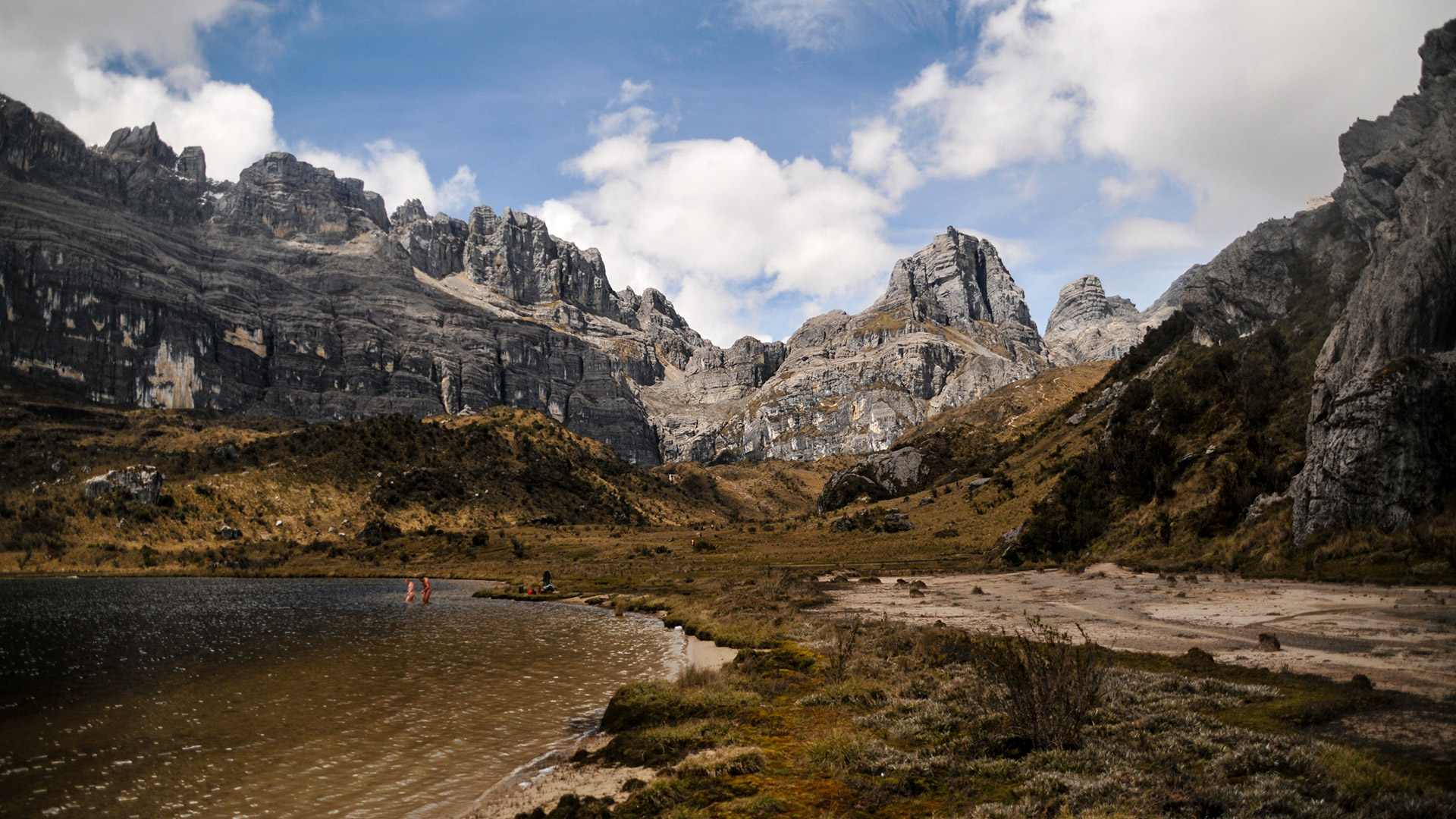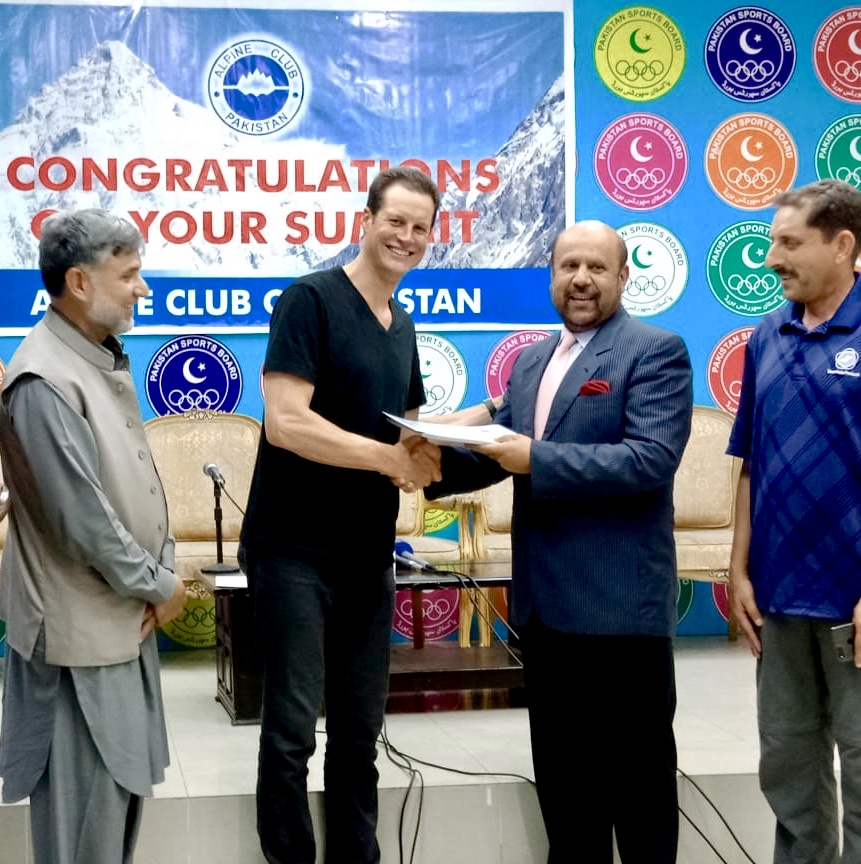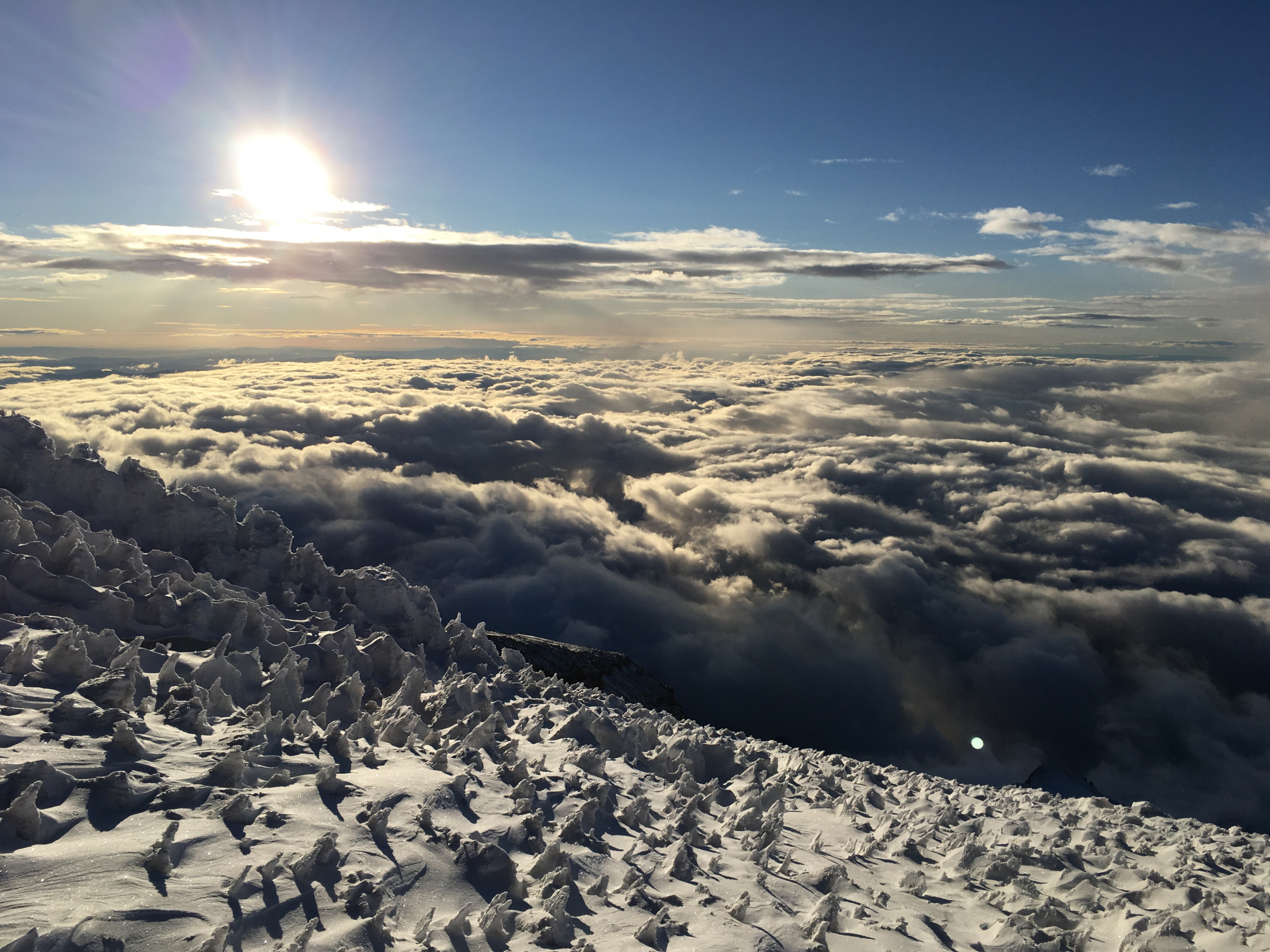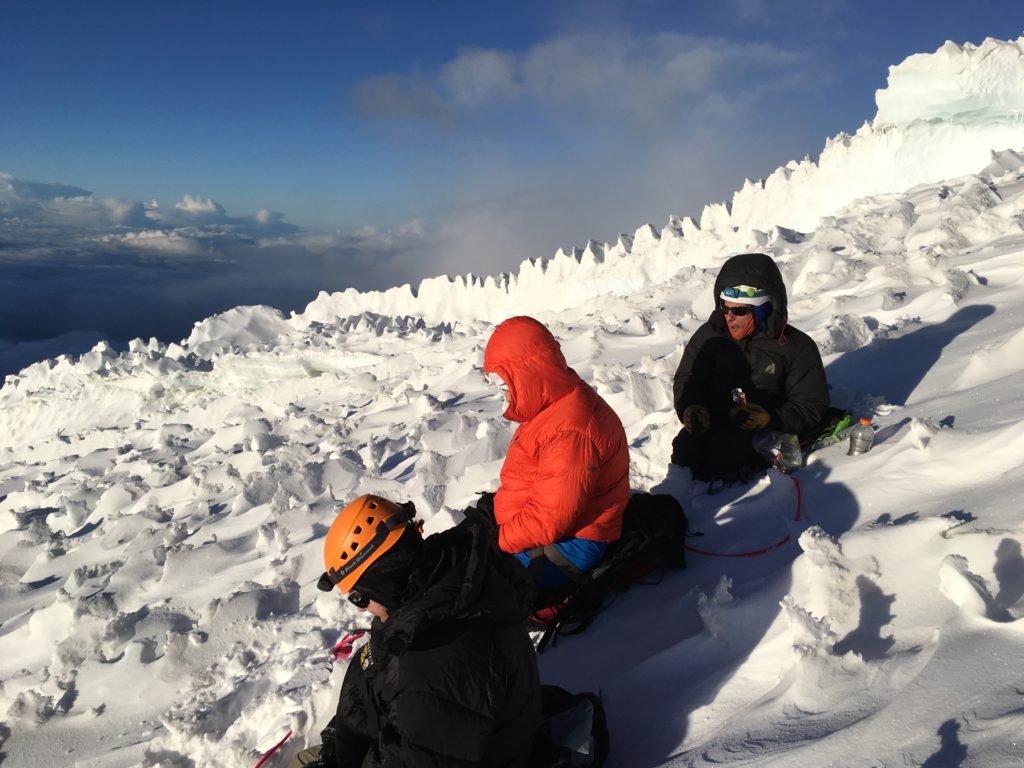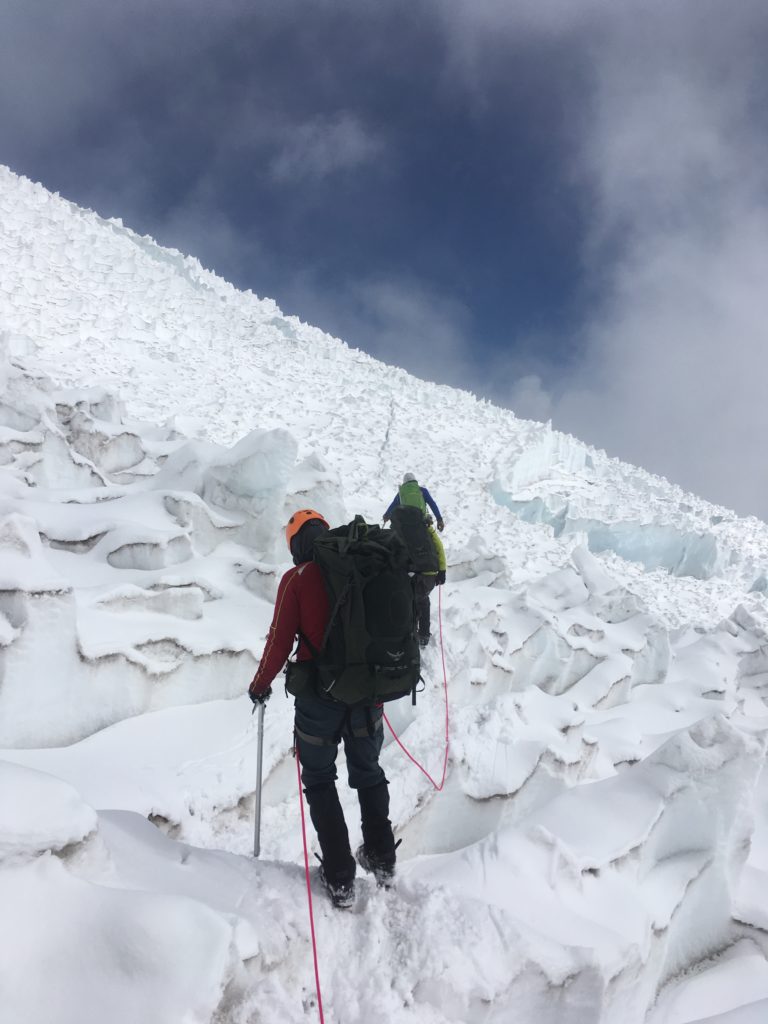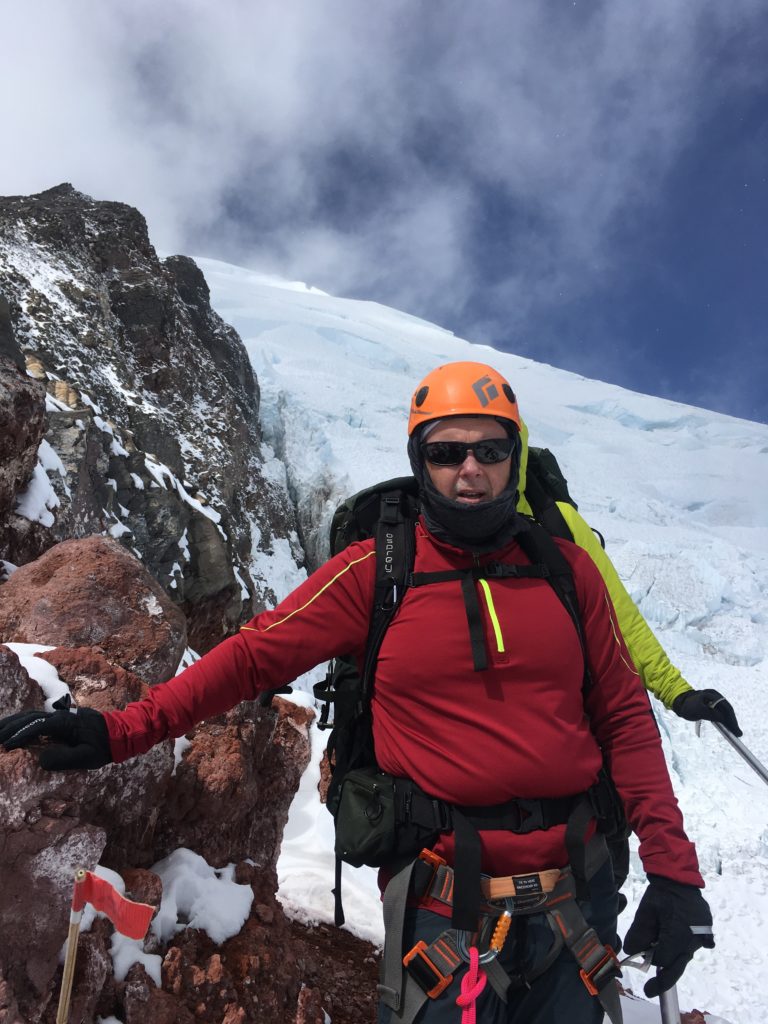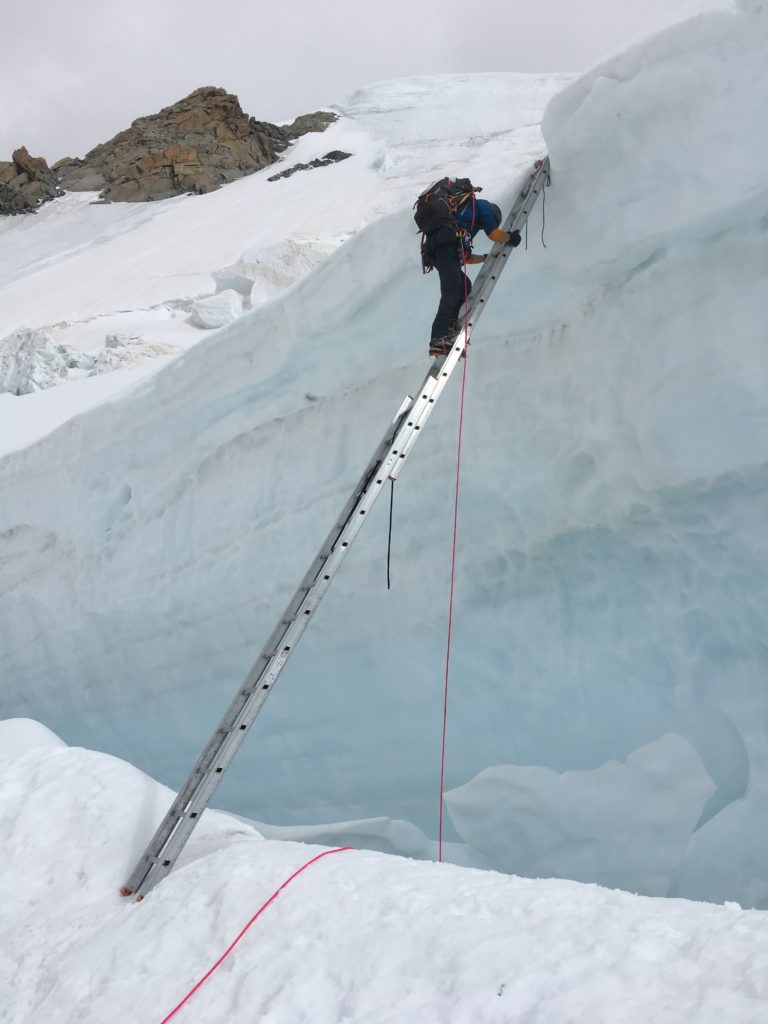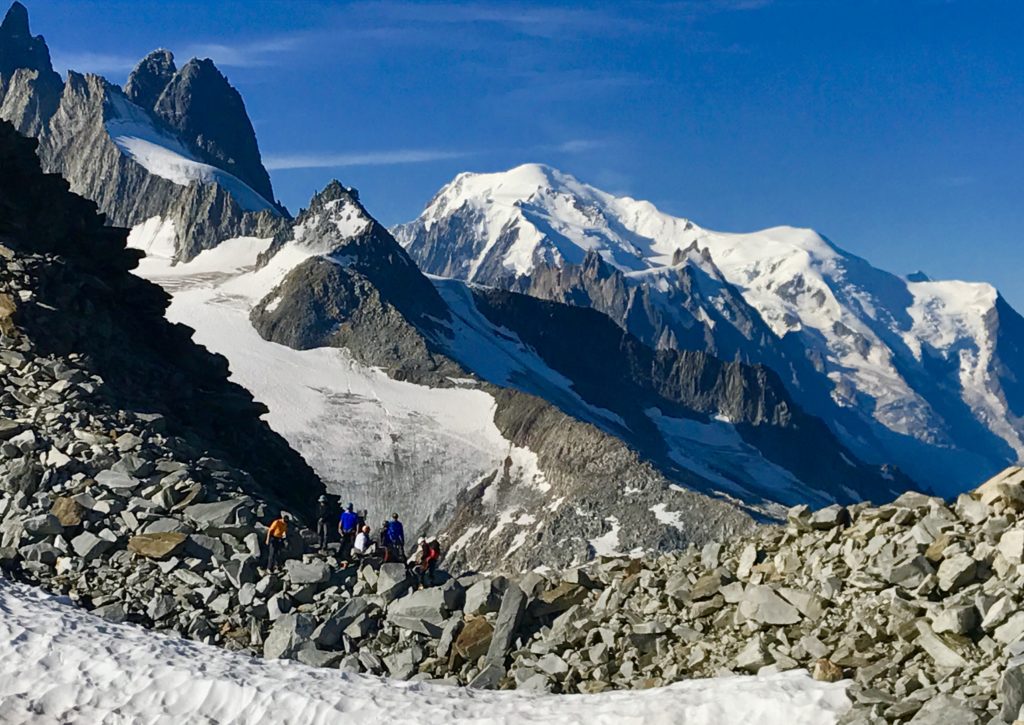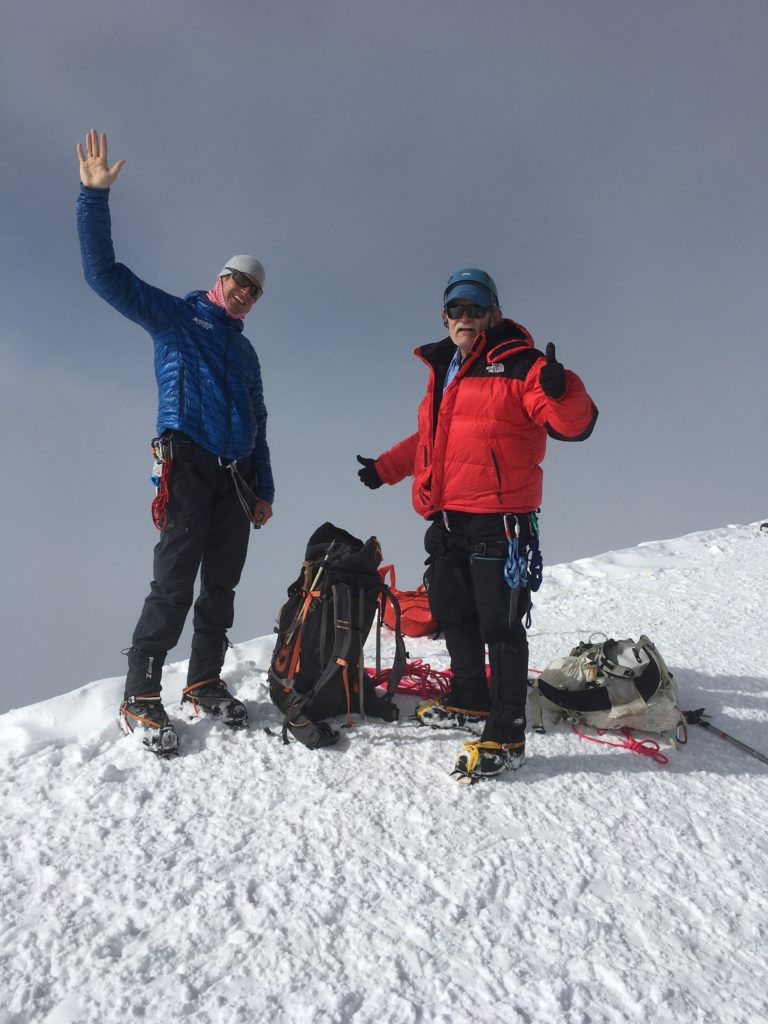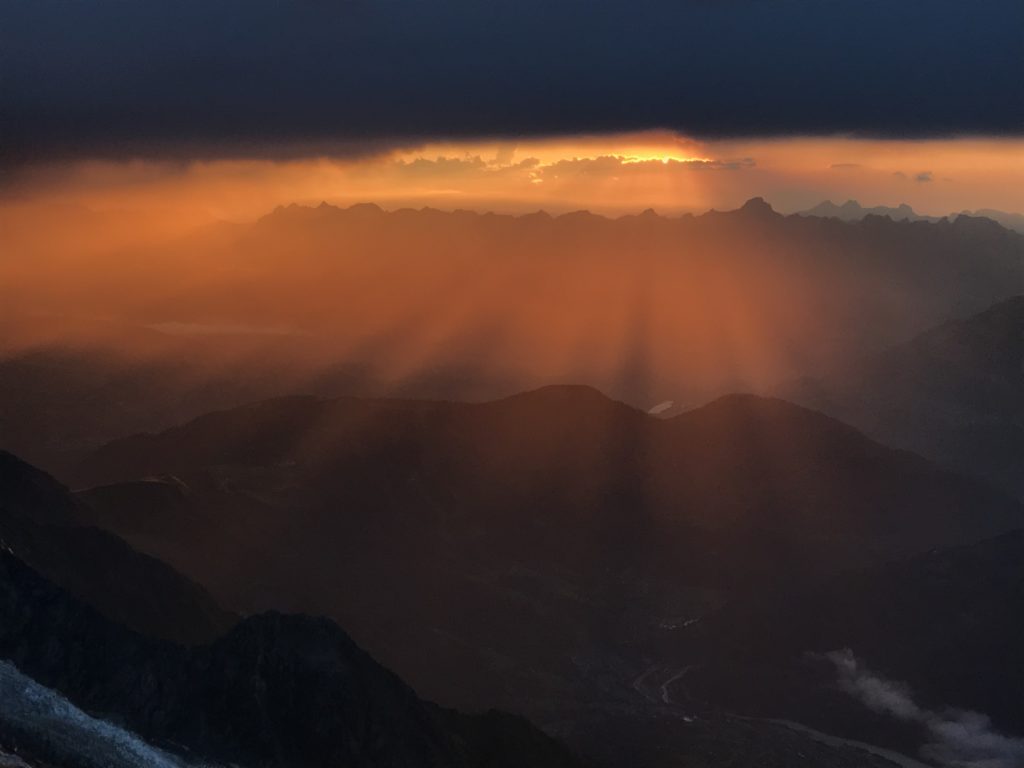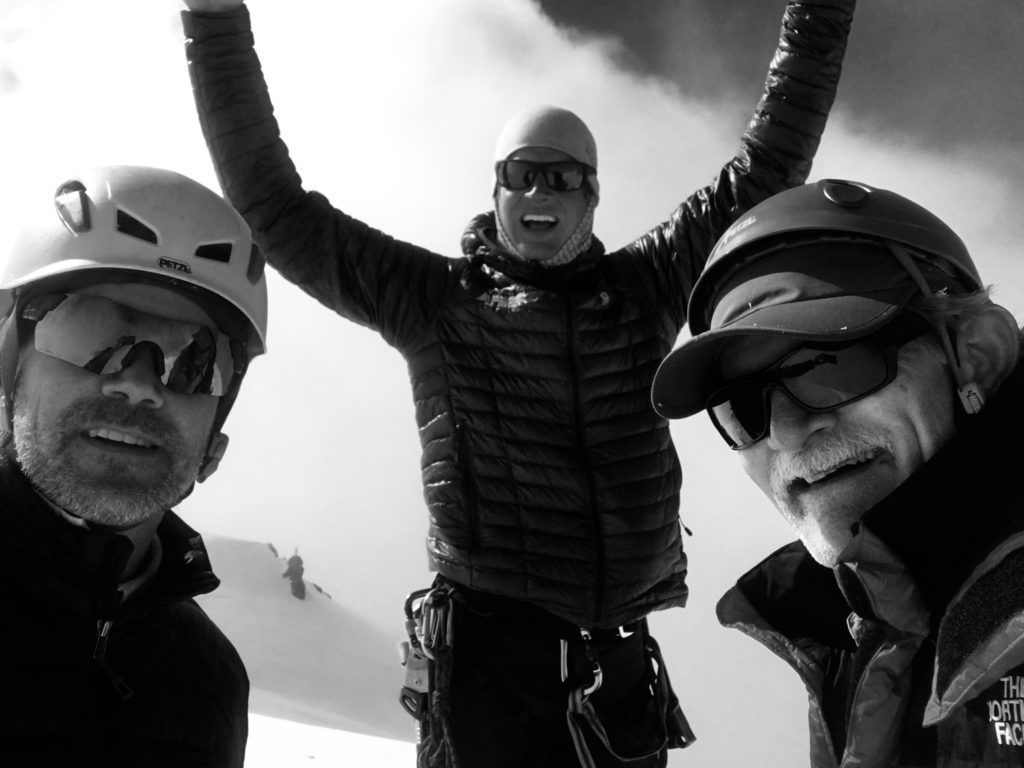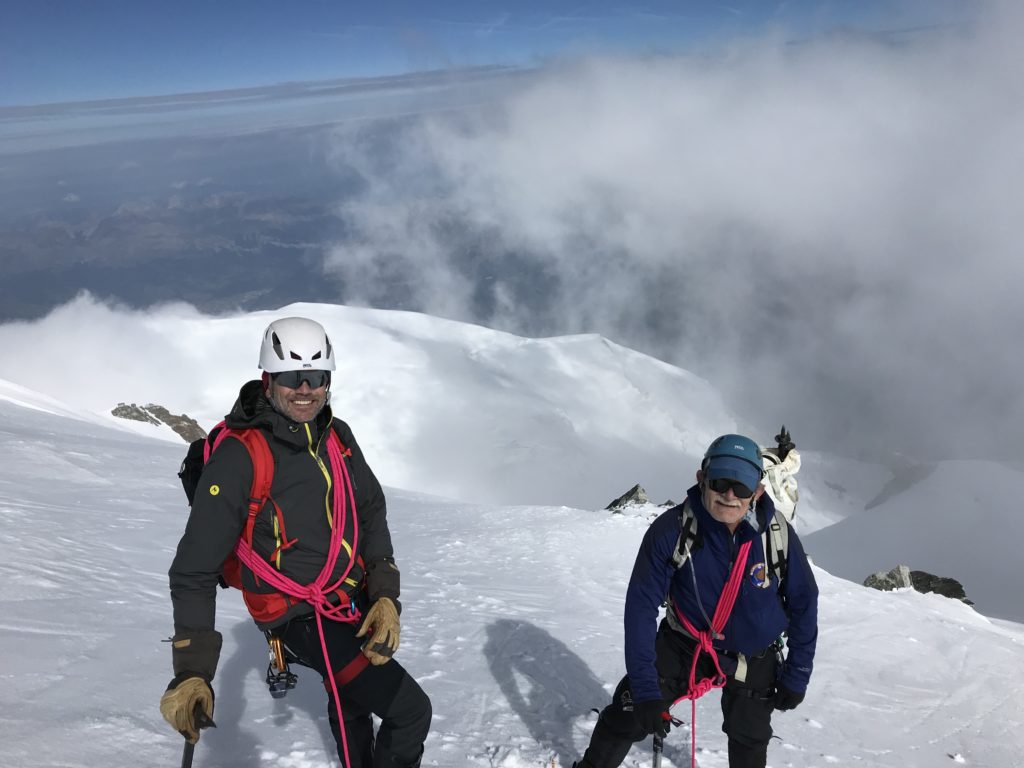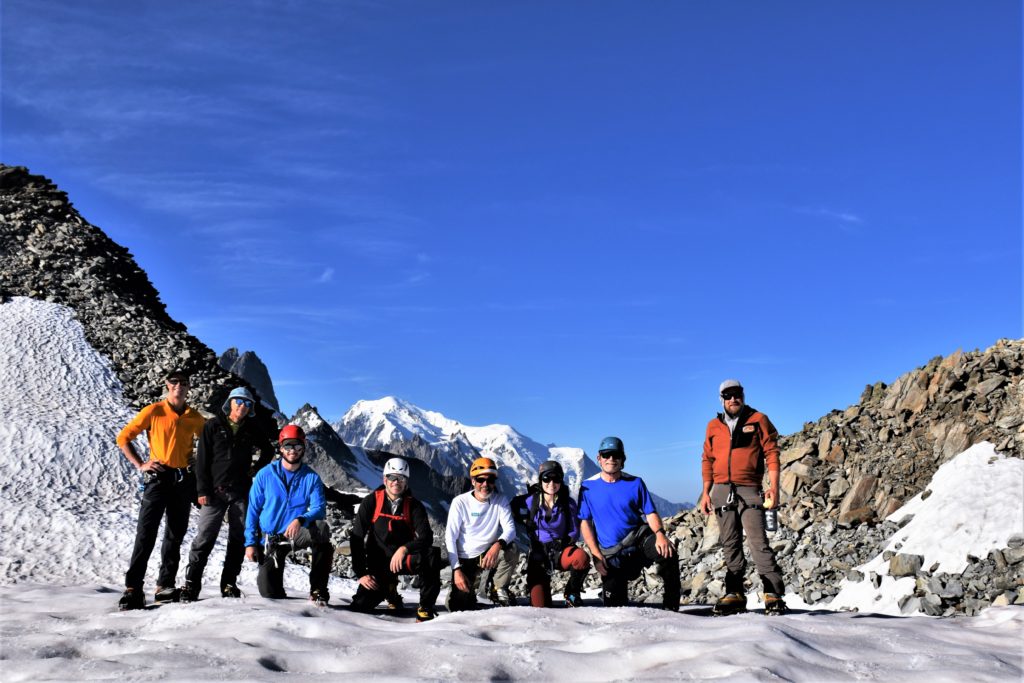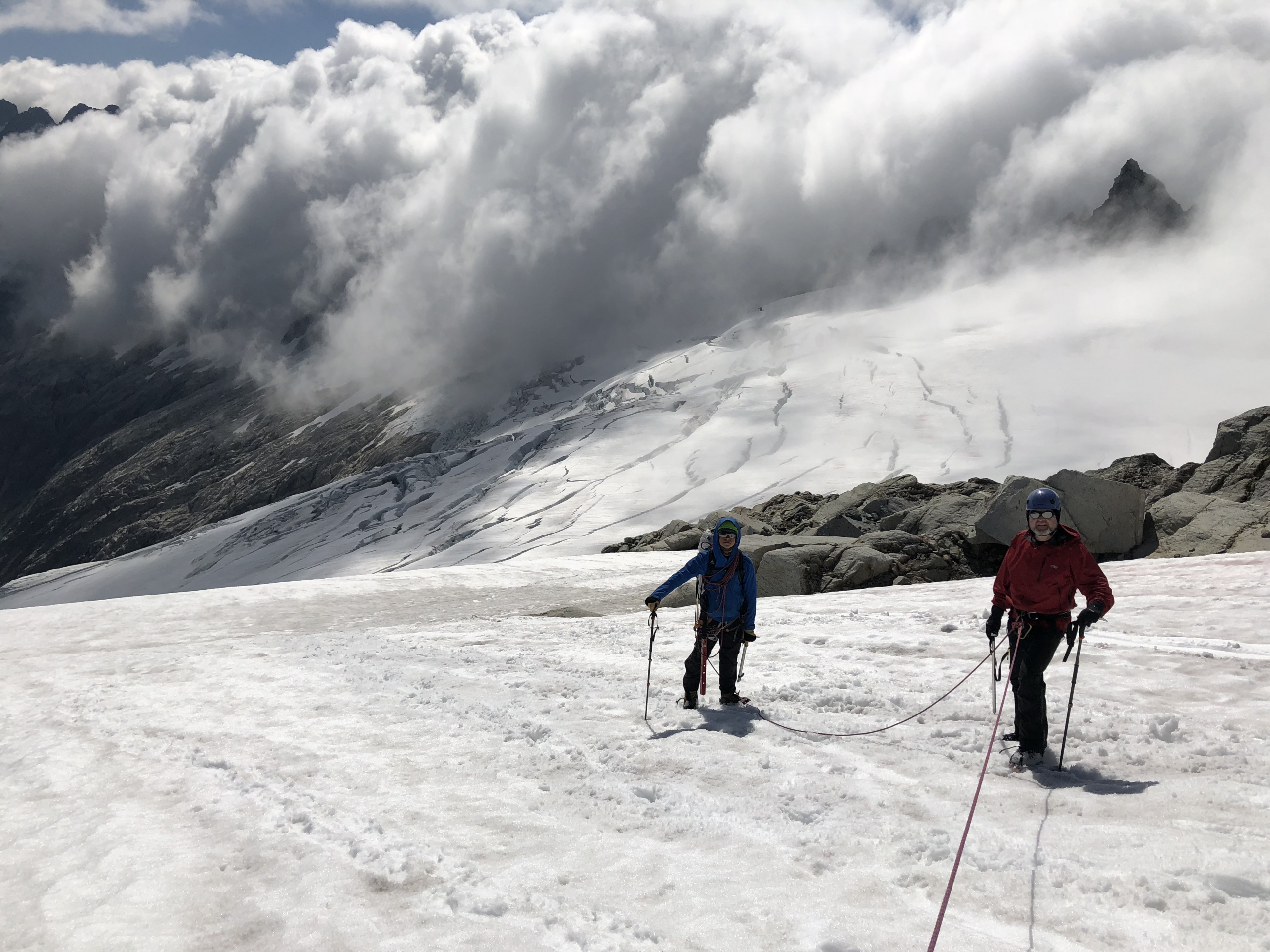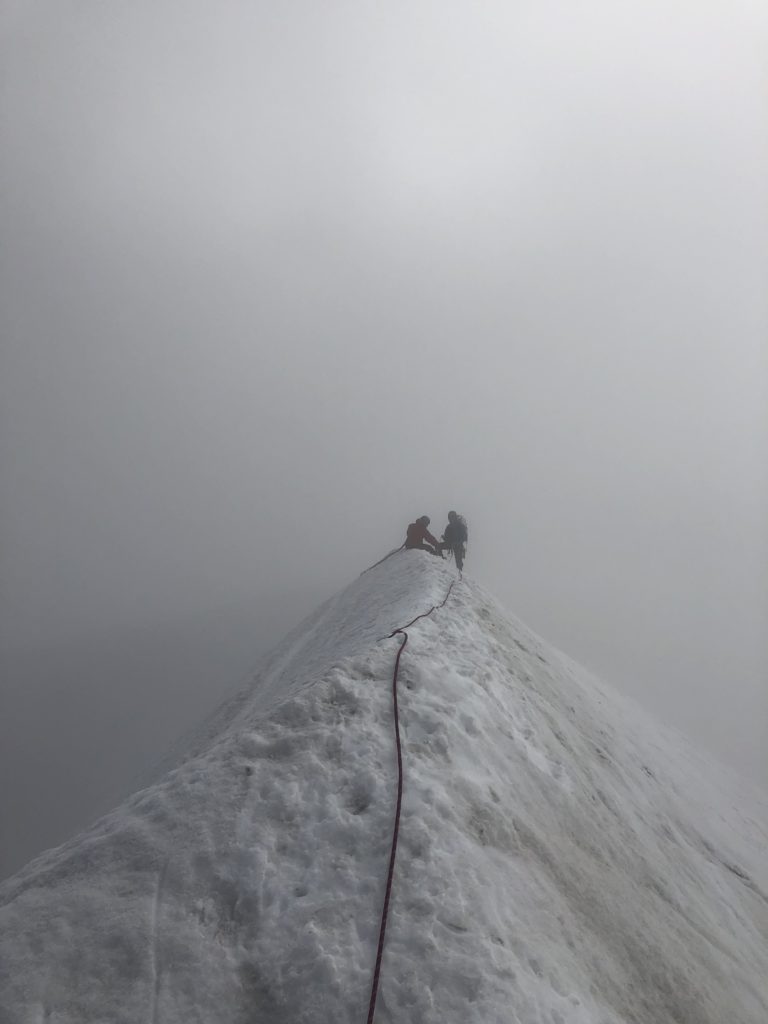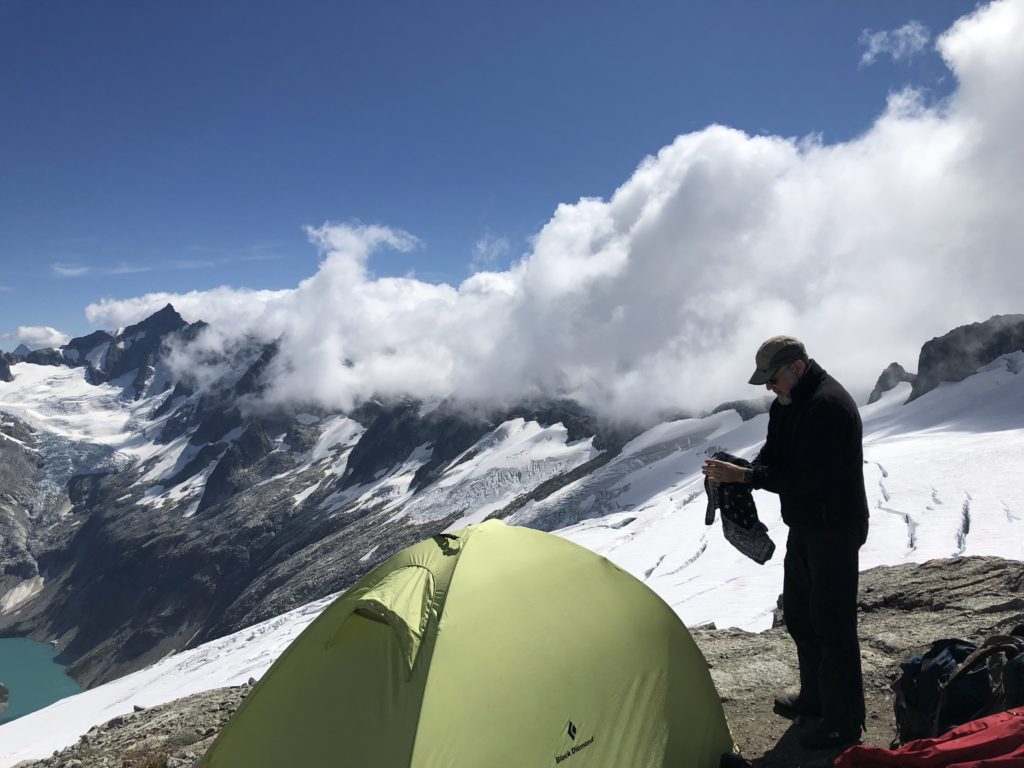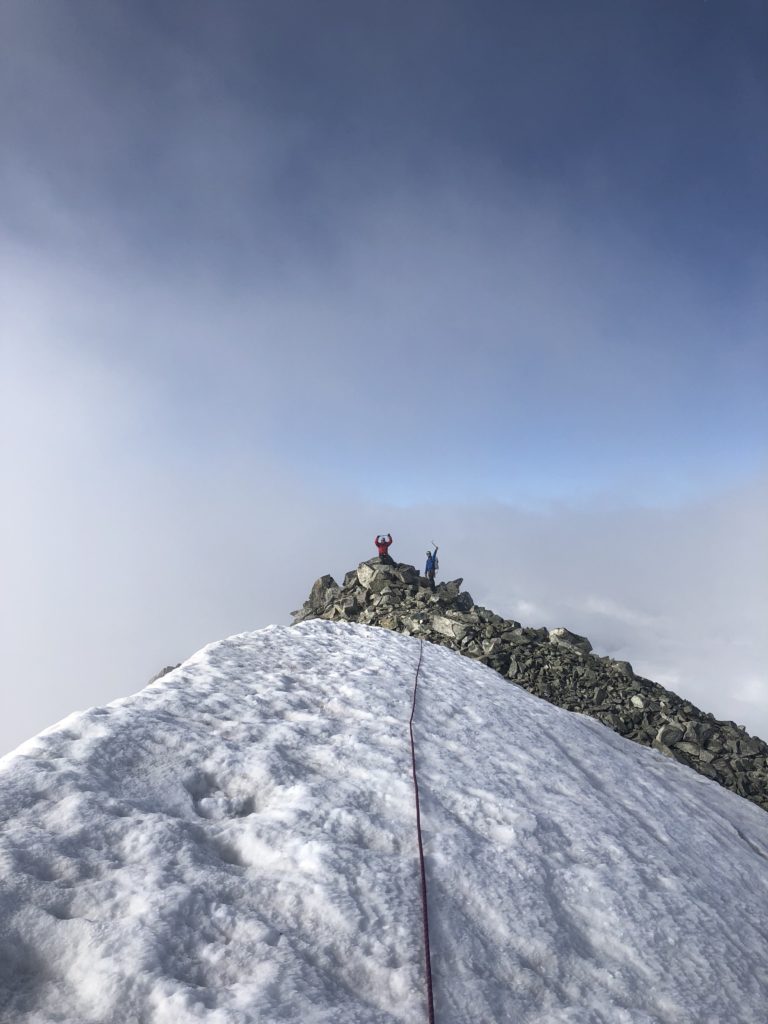After our banner season on Mount Everest this past spring all I wanted for our K2 expedition was a safe return for everyone, and perhaps a chance at a summit attempt. After my first successful expedition to K2 in 2014, I led expeditions again in 2015 & 2016 that were unsuccessful, no climbers from any teams reached the summit those years because of inclement weather and avalanches. I had one climber seriously injured by a falling rock in 2015 (Kami Sherpa) and fortunately he made a full recovery. The spectre of K2’s wrath haunts me, for I know it can unleash destruction and death of such magnitude never before seen in the climbing community. In 2013, the year before my first trip to K2, a father and son vanished from Camp 3. The father was a well known mountain guide with a vast depth of experience, however, on K2 the stakes are elevated significantly, making Mount Everest at times seem tame. When I was on K2 in 2016, we had already made one trip to sleep at camp 3 and on our summit attempt we were preparing to climb from Camp 1 to Camp 2 when a massive avalanche came down from above. We were protected on the Abruzzi ridge, but the avalanche swept down from somewhere near Camp 4 (the shoulder) to the base of the mountain, taking with it everything that was in our Camp 3. Some of us climbed up to Camp 3 to take a look and there was only the remnants of an avalanche passing through, if our team and the other teams climbing on our schedule had been there that morning it would not have been survivable, a minimum of 60 casualties.
Pre K2
Prior to K2 this season, I was on Mount Everest and led the rope fixing effort to the summit, for all teams, and a record number of climbers ascended during the good weather window that followed. In addition to our team climbing Everest a few of us also climbed Mount Lhotse (4th highest). It couldn’t have gone better for us on Everest, and I was wondering how long my luck would hold out. Because my Sherpas had fixed the lines up to the summit of Mount Everest, I knew this would be good practice for them on K2. Upon completion of the Everest season in early June we refilled our oxygen cylinders, packed our tents, ropes, and other equipment and headed to Islamabad, Pakistan. The process for obtaining climbing permits and tourist visas to climb K2 in Pakistan is much more complicated and time consuming that for Mount Everest, we had been working on that for nearly 6 months. We assembled in Islamabad on June 20, then flew to Skardu where we traveled by jeep to the village of Askole where we began the 70 mile trek to base camp.
The Trek
During the trek to K2 base camp the weather was not good, we had a lot of rain and snow that slowed us down. Upon reaching K2 base camp (16,500’) there was 2 feet of snow on the ground and it was wet, making all of our tents, clothing and equipment wet. After being there for a couple days the sun appeared and we were able to dry out! We rebuilt our entire base camp after the snow melted to our specifications, installing a big dining tent with gas heaters, a shower tent, and toilet tents, and then went about our training before embarking on our first rotation.
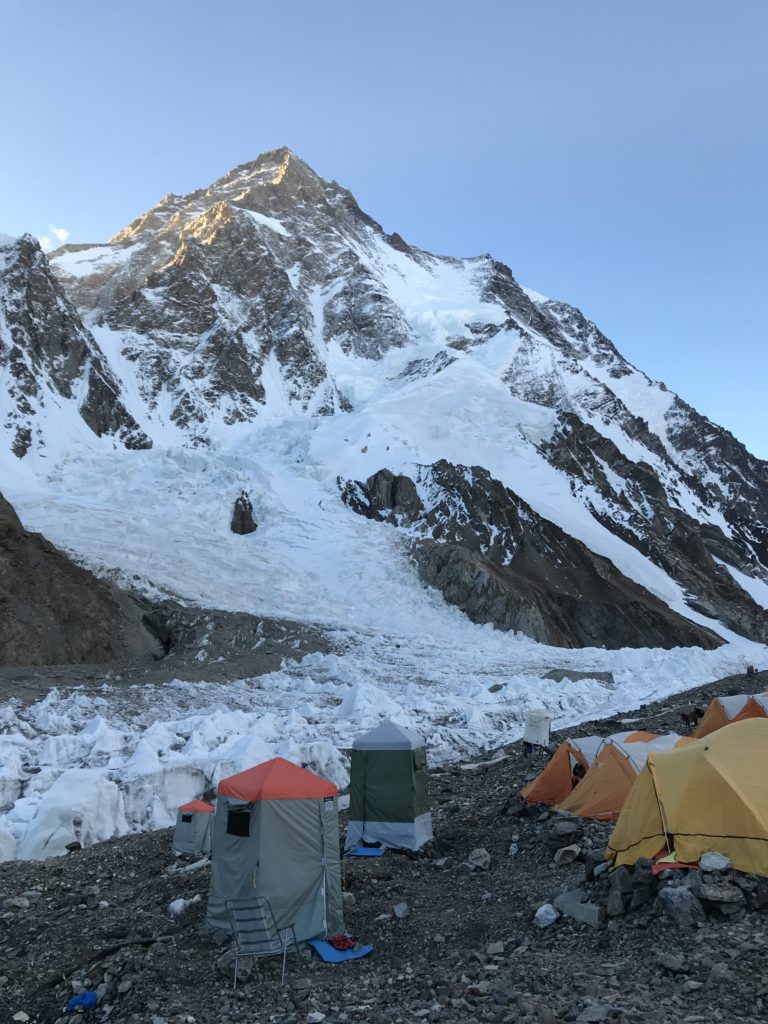
K2 & Base Camp
First Death on K2
We climbed up to Advanced Base Camp (17,500’) to sleep, then climbed to Camp 1 (20,100’) on the Abruzzi ridge for 2 nights. On our way up a climber from Canada fell to his death. We saw him come right by us as we were on the steep slope below Camp 1, and we could tell that he was already gone. We learned that he was rappelling an old fixed line just below Camp 2 that broke. I’ve seen this happen before to a German mountain guide on Ama Dablam just below Camp 2, it was very sad.
At that point we had to reassess the situation, the fixed lines put in earlier by the Japanese team to Camp 2 could not be trusted. I tasked our Sherpa team to re fix the route from Camp 1 to Camp 2 with our semi static kernmantle ropes, a much stronger and more expensive alternative to the cheap polypropylene (Korean) rope that the Japanese team had used. I am very proud of what our Sherpas accomplished that next day, they were able to re fix the entire route from Camp 1 to Camp 2 with our ropes as we climbed behind them. We spent 2 nights at Camp 2 acclimatizing and climbed partway up the Black Pyramid on the good ropes that our Sherpas fixed, then descended to base camp the following day to rest and recover.
Rest in Base Camp
As we rested and recovered in base camp our Sherpas worked tirelessly carrying loads of oxygen, tents, food, ropes, and other equipment higher on the mountain, and fixing ropes to Camp 4 and above. We had 12 Nepal Sherpas who regularly work with me on Everest, and 5 Pakistan high altitude porters (HAPs) which are the Pakistan equivalent of our Nepal Sherpas, they worked together in preparing the high camps and climbing route for us.
Summit Attempt
A good weather window was forecast by our meteorologist for July 20-21, so we prepared to put ourselves in position for a summit attempt. We climbed up to ABC, Camp 1, then Camp 2. However, that night at Camp 2 the weather deteriorated and we had wind gusts all night with 2 feet of snow outside our tent in the morning! After talking by radio with our Sherpas in Camp 4 who were working on fixing lines up higher on K2, we nearly called off our attempt. We were all packed up and ready to head down from camp 2 when I called them one last time on the radio and spoke about the conditions. They said they had over 3 feet of snow (1 meter) at Camp 4 but that the weather was nice and they were going to try and continue working to fix lines toward the summit. We had a team meeting at Camp 2 just as some of us were about to begin the descent, and we decided to hold a day at Camp 2 and reassess the following morning. I’m really glad we stopped and had a team discussion and decided to wait a day because after that the weather was much better, we climbed to Camp 3 and the following day to Camp 4.
Camp 3
We had discussed where to position our Camp 3 several times before the summit attempt as myself and a few others who knew about the disappearance of the father and son team in 2013, as well as the complete loss of our Camp 3 in 2016, were worried about the safety of that slope. Sleeping on an avalanche prone slope was not something that we wanted to be doing; worrying all night about being buried alive in an avalanche, where the debris are carried off a cliff. We decided that if we positioned our Camp 3 much farther to ‘climbers left’ near the ridgeline, as opposed to the traditional location which is far out on the broad glacier slope on the northeast side of the mountain, that we would be much less exposed to a potential avalanche. As we approached Camp 3 I was relieved to see that it was indeed on the ridgeline and did not appear to be exposed to snow avalanches. As I lay in my sleeping bag before going to bed that night with John and Geoff next to me in our tent, I would be lying if I said we weren’t all a little nervous. However, the next morning we were in good spirits as we climbed up to Camp 4.
To the Summit
That night we woke up and departed Camp 4 (25,500’), our high camp, at 9 PM in a blizzard. We were in a cloud and it was snowing and wind gusting, but with our headlamps on we could see the route and we climbed up to the shoulder, within an hour we were above the cloud and it was a starry night! We could see K2 in the moonlight, as well as neighboring Broad Peak with climbers headlamps heading up from high camp on their summit bid. As we climbed up the shoulder of K2 we had to break trail in knee deep snow, at times it was thigh deep, we saw the Serac (ice cliff) towering high above us and blacking out the stars. While ascending the bottleneck, spindrift came down on us frequently and we had to keep our hoods up to prevent the snow from going down into our suits!
As we approached the traverse I saw one of our Sherpas (Siddhi) who I have climbed Everest and other peaks with numerous times out front breaking trail and pulling the fixed ropes out of the snow as it had been buried by the recent snowfall. After he made the ‘traverse’, a short but precarious section where a nearly 10,000’ (3,000m) drop is below, he was climbing up the steep and icy slope when a small avalanche broke off and the slope around him slid away. By the beam of my headlamp I watched and expected to see Siddhi slide away and down the ‘bottleneck’ where many unfortunate climbers have met their end on K2, but the rope and anchors held him, and he continued climbing up. After that we made our way up to the bench to take a rest break.
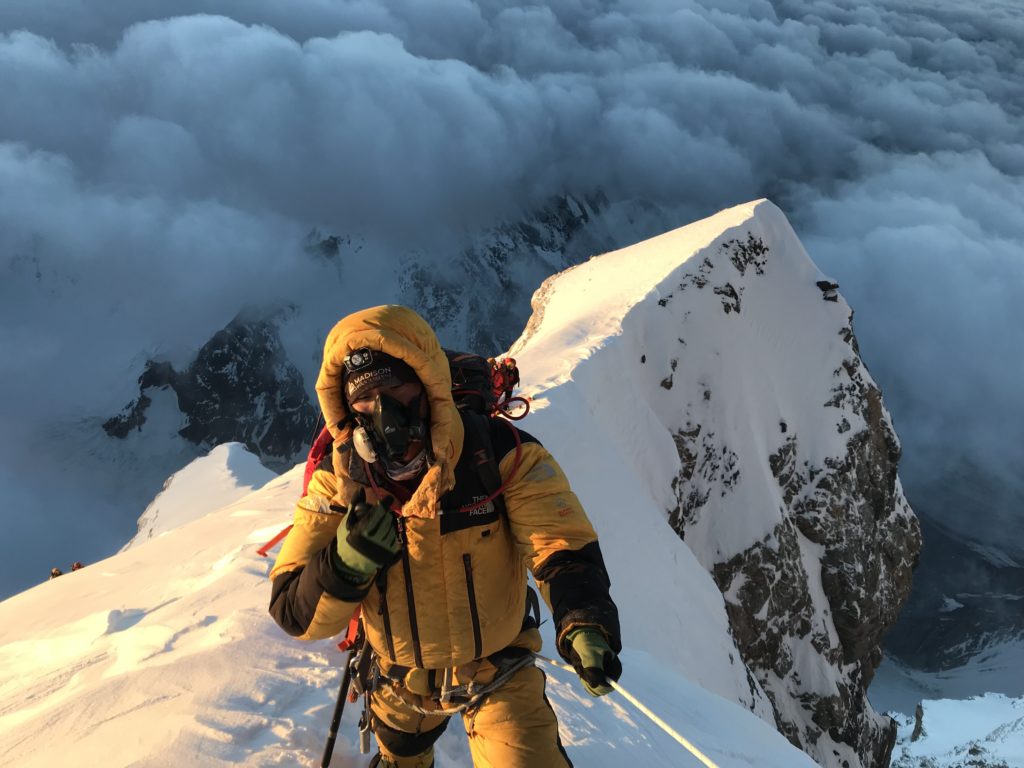
Above The Traverse on summit day
After 7 hours of climbing we took a break to change our oxygen cylinders, to eat and drink, and to admire the view as the sun rose over the Karakorum. It was spectacular! From here the only climbing afterward is the moderate snow slope leading to the summit. We broke trail in knee deep snow all the way to the summit of K2, it took about 3 hours and was monotonous work, but we had views all around and knew we would be successful. Once on top we savored the moment, some of us cried, others hugged, called Mom from the satellite phone, and we rejoiced in the success of our collective effort. Then we began the descent.
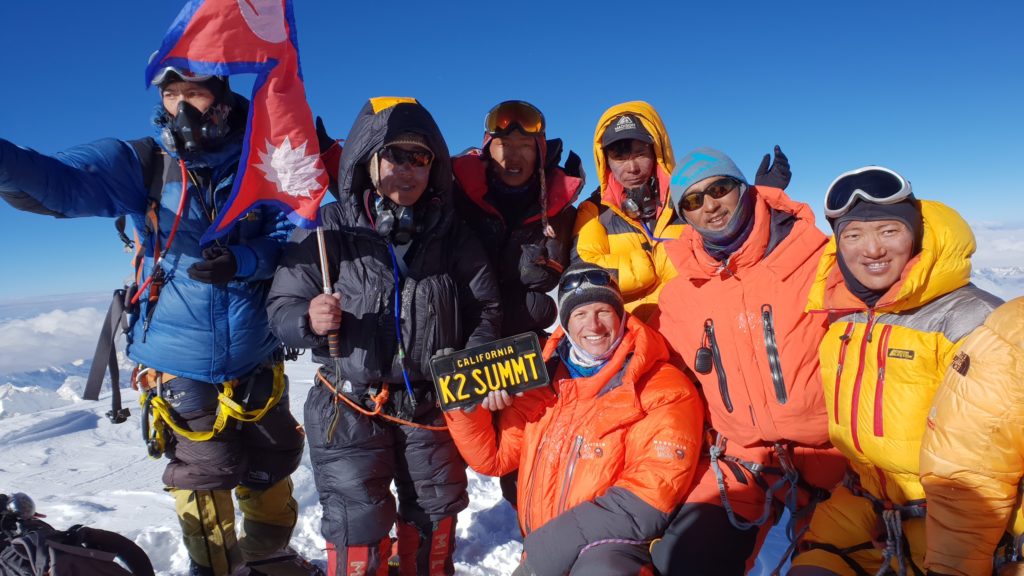
At the top with some of our climbing Sherpas
Death on the Descent
As we made our way quickly and efficiently from the summit to the ‘bench’ rest break, we stopped to see who might be below us. Sure enough, the Japanese team was making their way up our fixed ropes very slowly and spaced about 40 feet (12m) apart. As they ascended our lines up the steep and icy terrain they had their full body weight on the ropes, making it impossible for us to rappel our lines to descend. I was a little upset. This team had hardly contributed to our rope fixing effort and was now using our ropes and effectively blocking us from descending, it would take at least several hours for them to climb past us and we would end up sitting and waiting, using up our oxygen and getting very cold as the sun went down, this would be a bad situation.
Even if you do all the work fixing ropes on a mountain you can’t stop others from using them. On Everest, the Expedition Operators Association (EOA) has done a good job of collecting a small fee from each climber to fund the rope fixing project, where generally one or two teams takes the responsibly and is reimbursed for expenses associated in the effort such as the cost of rope, ice screws & carabiners, additional Sherpas, oxygen, etc. On K2 no EOA exists, so only by cordially asking other teams for contributions can a team taking on this effort be reimbursed. However, only my team and Dawa Sherpas team were in a realistic position to climb the mountain. The other teams arrived at base camp with the expectation that someone else would do the hard and dangerous work (and take the financial burden) of putting up the fixed ropes, and they would follow.
As we gathered at the ‘bench’ rest break we discussed what we should do. Waiting 4+ hours was out of the question. Fortunately, myself and others on our team had carried over 200m of extra rope, which we began fixing as we descended around the Japanese team. As we passed them I couldn’t believe how disorganized they were. Some of them were good climbers and looked okay on the route but some were really struggling, and I dreaded what would become of them as I continued down with my team. After passing the Japanese team we descended the ‘traverse’ and ‘bottleneck’ reaching our Camp 4 that afternoon. We packed up and continued our descent to Camp 2 arriving just before nightfall.
The next morning as we began packing up at Camp 2 for our final descent to base camp we learned by radio that not all the Japanese had returned to Camp 4 after their summit. Our Pakistan liaison officer in base camp called us and said that one of the Japanese climbers was still high on the mountain. We were not in a position to go back up, so we continued our descent to base camp arriving that afternoon for a celebration dinner. That evening we heard the news that the Japanese climber who had not returned to high camp was the last in their team coming down from the summit in the dark, and had become tangled up in the ropes on the traverse, then had fallen. Nobody would be going back up for him.
I was saddened but also frustrated by the lack of team work the Japanese team demonstrated. When I climb we don’t leave anyone behind. If someone is struggling we help them. We try to make good decisions and turn around if we are too tired to continue up to the summit and down in good style. Unfortunately, this is not the mentality of many teams I encounter on big mountains, especially on Mount Everest and K2, where generally most of the 10+ fatalities on Mount Everest each season are preventable if only climbers made it their priority to climb together as a team, rather than as individuals where it’s every man for themselves.
Heading Home
After two days packing up in base camp we trekked out 70 miles over 4 days to Skardu, then had a big celebration dinner with all of our climbers, guides, Nepal Sherpas and Pakistan staff. It was a grand affair! I was really happy that 8 of our 10 clients made the summit, along with 3 guides (myself, Geoff Schellens, Robert Smith), as well as 10 of our Nepal Sherpas and 5 of our Pakistan HAPs. The Pakistan HAPs were very excited to have reached the summit for the first time after numerous attempts. Bashir, who is from the nearby village of Hushe, I have known for several years and he kept thanking me again and again that night. This was his 8th K2 expedition working as a high altitude porter and his first summit. Generally, teams that hire Pakistan high altitude porters only use them to carry loads to Camp 4. They are offered a chance to go for the summit, but without oxygen it’s nearly impossible. I brought enough extra oxygen for all 5 of our Pakistan HAPs (along with additional masks & regulators) for them to attempt the summit with us, and they were all successful including the youngest person from Pakistan to climb K2.
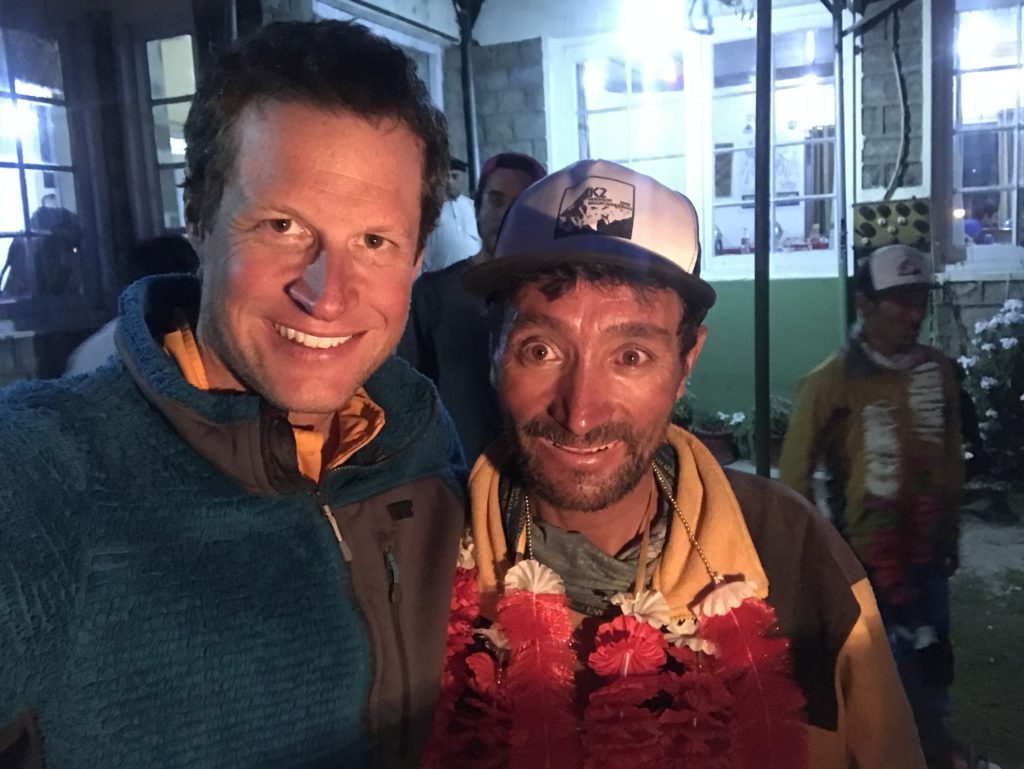
With Bashir, Pakistani high altitude porter at our celebration dinner
Back in Islamabad the ministry of Sport and the Pakistan Alpine Club had a press conference for us where we received our official summit certificates, we had a fun time giving interviews for Pakistan television networks. Promoting mountaineering (sport) as well as tourism is very important for Pakistan. The feeling was good vibes all around. As we retired to the very comfortable Serena hotel for our last night in Pakistan, we savored the feeling of having completed a successful expedition where not only all members who embarked on the summit attempt reached the top but more importantly we all returned safely. I can only hope my good luck continues a little longer!
-Garrett Madison, Expedition Leader
